Nepal earthquake: The race is on to help thousands trapped under rubble around Kathmandu, while remote villages face a long wait for help
The death toll is at least 1,500, but that total is expected to climb dramatically as world leaders pledge support following the country's worst earthquake for 81 years
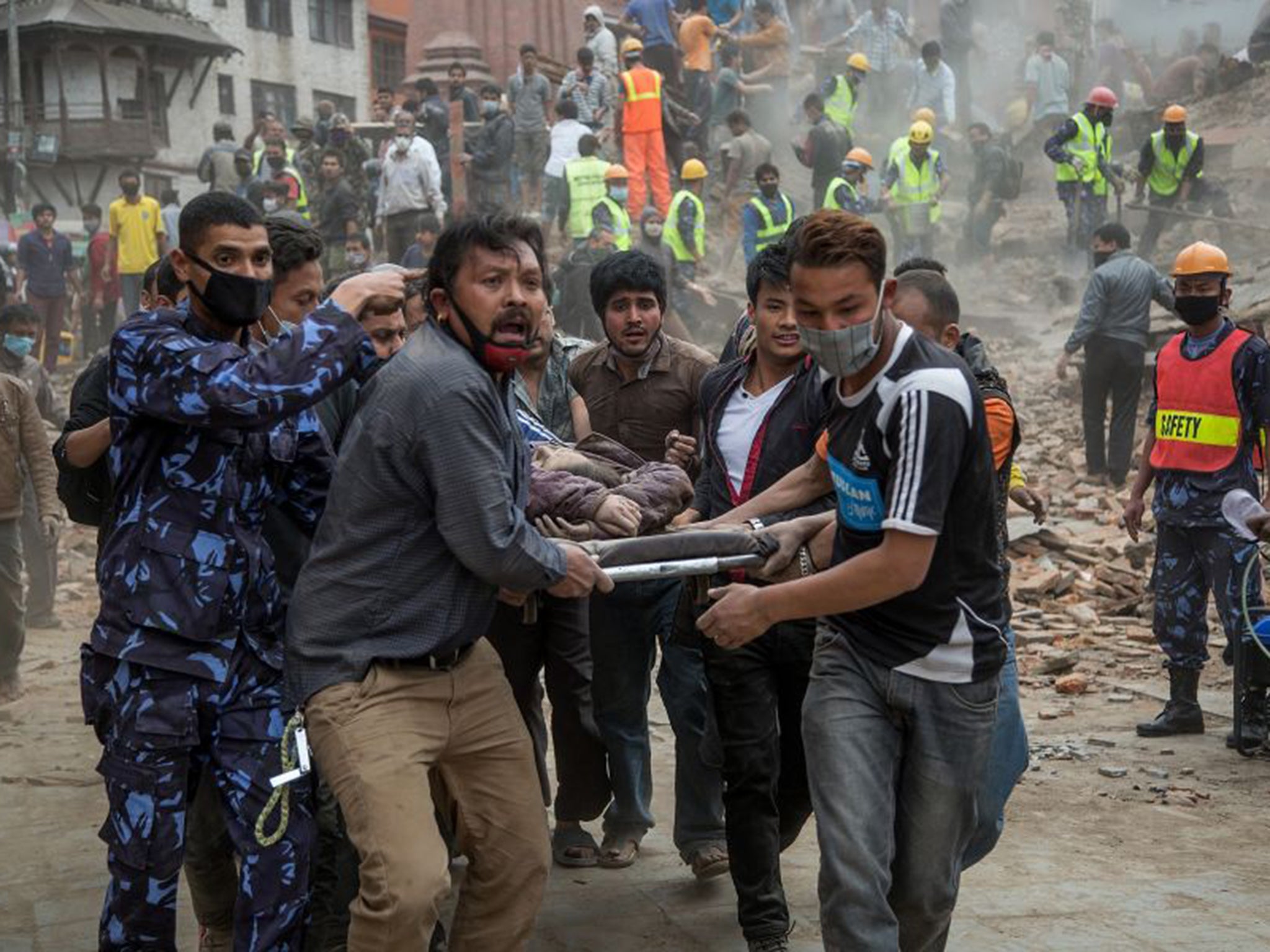
A desperate race is under way to help hundreds of thousands of victims after a massive earthquake hit Nepal. Officials said the death toll in the Himalayan state had risen to at least 1,500, but that total is expected to climb dramatically.
More than 30 people were also reported dead in parts of northern India affected by the quake, as well as at least 10 victims in neighbouring Tibet and Bangladesh. Nepalese officials were warning of “significant” casualties in remoter districts nearer the quake’s epicentre, 50 miles north-west of Kathmandu.
At least 18 people were killed on Everest after the quake triggered a massive avalanche. Some Britons are among the missing. Other climbers were trapped higher up the mountain, while those at base camp had to run for their lives to escape falling ice and rocks.
The government of Nepal declared a state of emergency in the affected districts, and Bamdev Gautam, the Deputy Prime Minister, appealed for humanitarian assistance. International leaders promised support. Prime Minister David Cameron said the UK “will do all” it can to help, while the United States pledged $1m in aid and dispatched a disaster-relief team.
The earthquake, which registered a preliminary magnitude of 7.8, struck shortly before noon local time, sending buildings toppling in the capital. The nine-storey Dharahara Tower, a Unesco-listed historical monument, was reduced to rubble, with reports of people trapped underneath.
US Geological Service scientists said the quake, at only seven miles beneath the surface, was a shallow one and likely to be more destructive as a result. “The shallowness made the ground-shaking at the surface worse than it would have been for a deeper earthquake,” said David Rothery, professor of planetary geosciences at the Open University. The seismic strike was the strongest to hit Nepal for 81 years, and tremors were felt 400 miles away in Delhi.
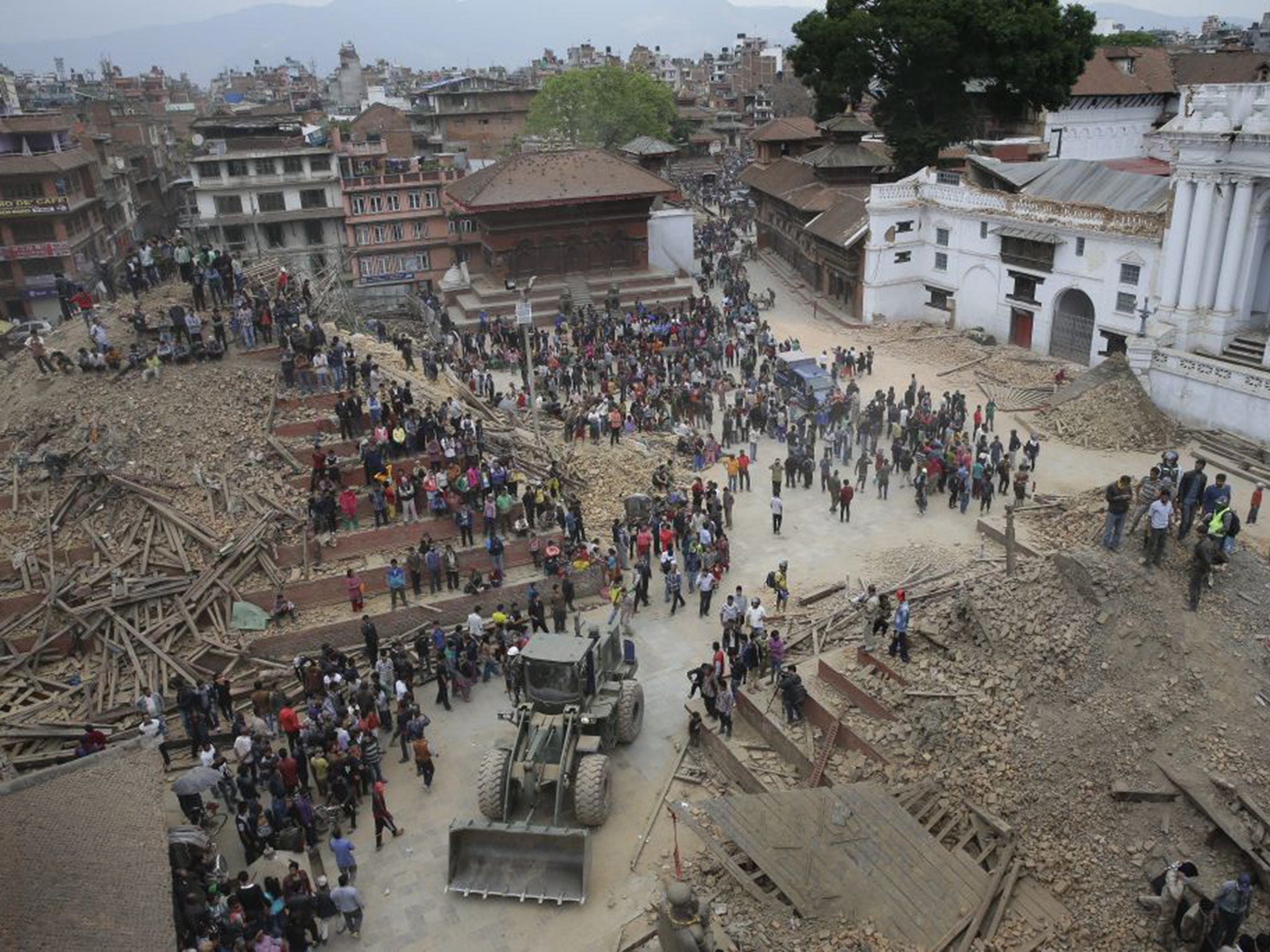
The quake spread outwards, passing through the densely populated Kathmandu Valley where eyewitnesses reported thousands of casualties. “Our village has been almost wiped out. Most of the houses are either buried by landslide or damaged by shaking,” Vim Tamang, a resident of Manglung, near the epicentre, told Associated Press (AP). He said half of those living in the village were either missing or dead. “All the villagers have gathered in the open area. We don’t know what to do. We are feeling helpless,” he said.
A magnitude 6.6 aftershock hit about an hour later, and smaller aftershocks continued to be felt more than 10 hours afterwards. Residents ran out of homes and buildings in panic. Electricity was cut as power lines were brought down and huge fissures appeared in buildings and streets. Businessman Shrish Vaidya described how he and his family fled their two-storey home when the quake hit. “It is hard to describe. The house was shaking like crazy,” he told AP. “We ran out and it seemed like the road was heaving up and down. I don’t remember anything like this before.”
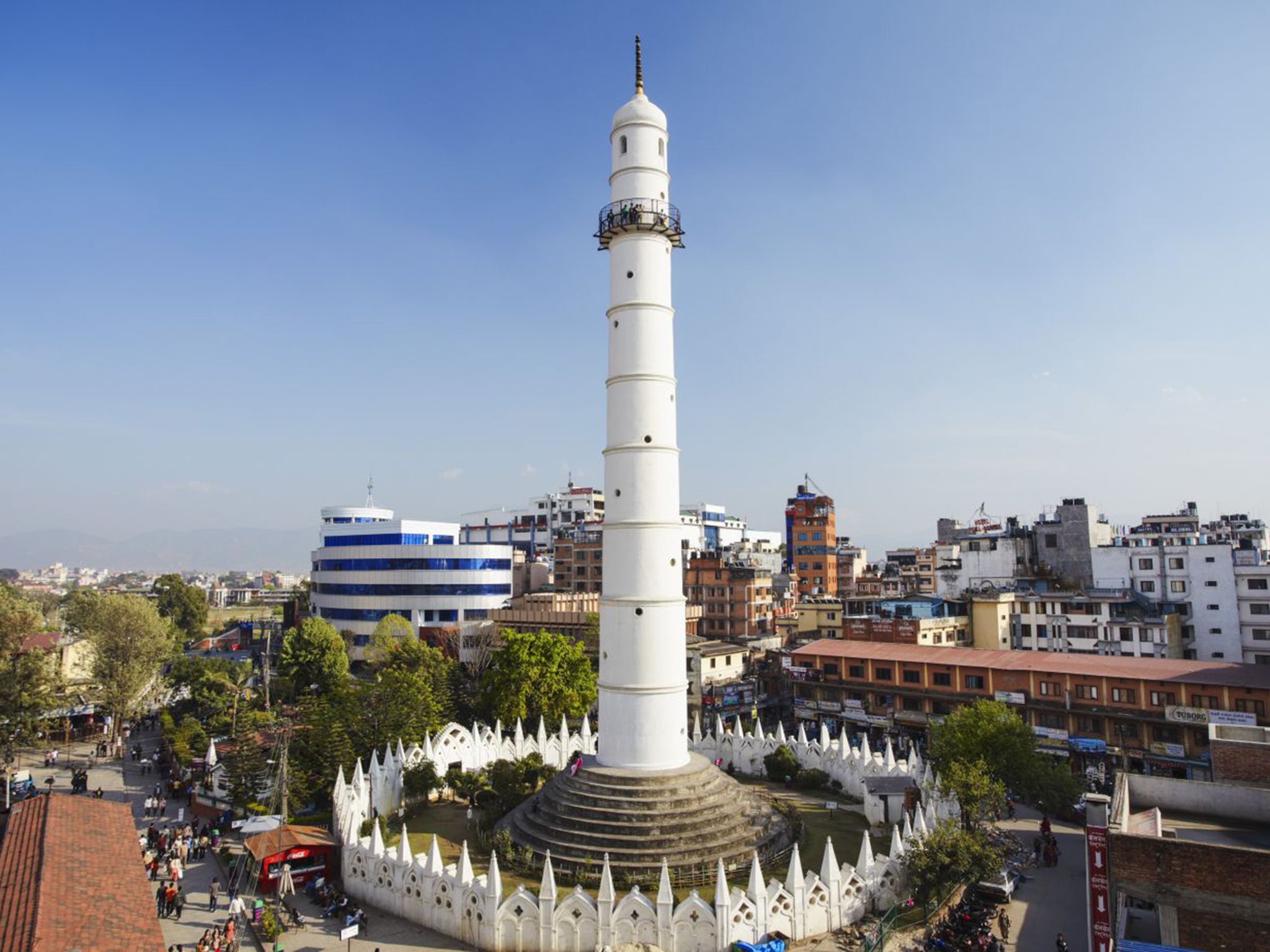
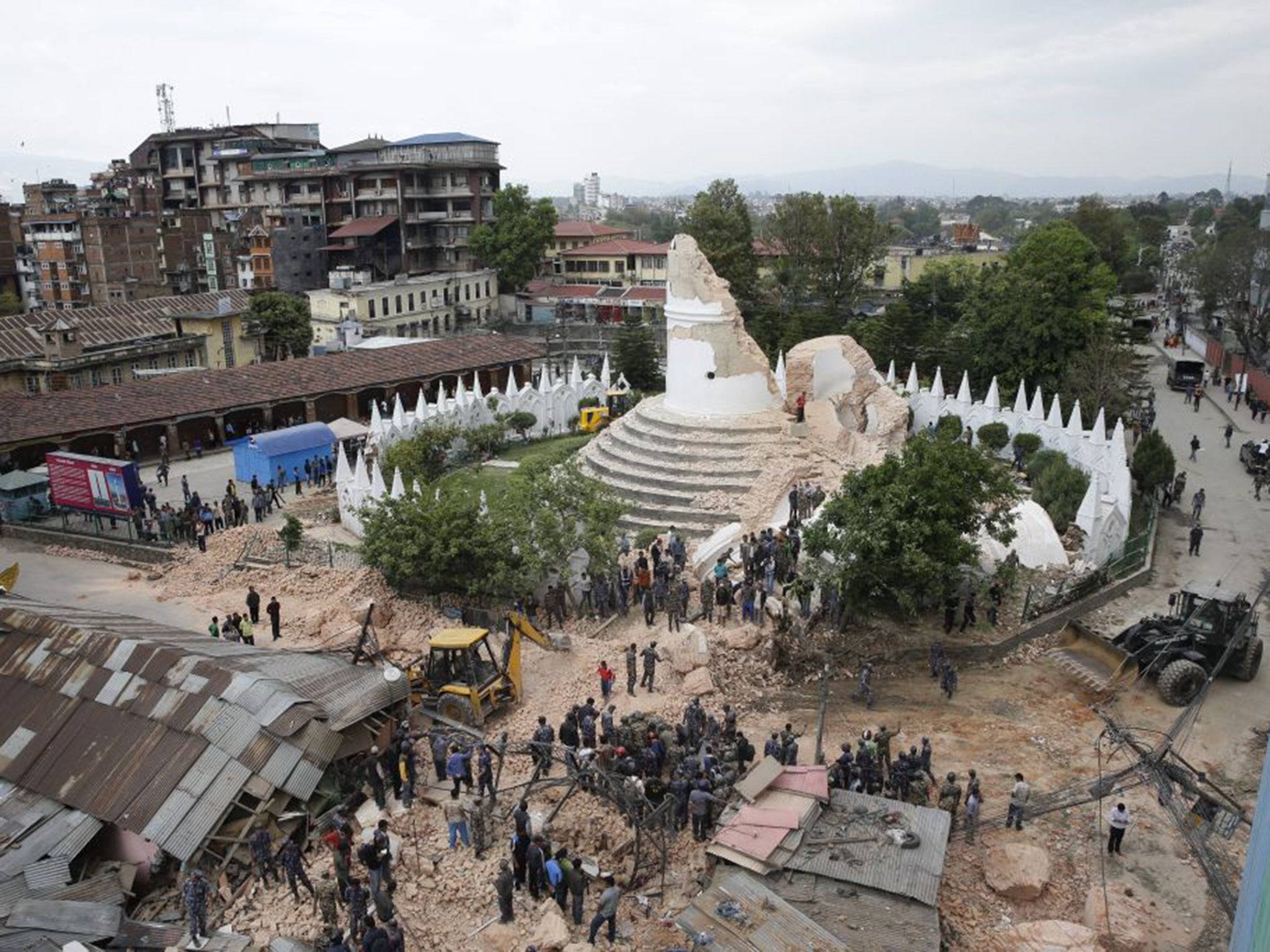
Nepalese television reports showed people digging by hand to reach those trapped in mounds of rubble. Jamie McGoldrick, the UN resident co-ordinator based in Kathmandu, said many of the buildings destroyed were poorly constructed and unable to survive earthquakes. “Buildings are built very close to each other and roads are quite narrow,” he said. “Anything that falls down blocks the access avenues. That makes it difficult to get assistance in and get injured people out, and that’s been the case at the moment.” He said alternative routes to bring material in were being sought. Reports said rescue workers were still unable to reach parts of the capital, let alone remoter areas.
Mr McGoldrick added: “There will have to be increased aid activity. We don’t have enough material and goods and capacity and expertise to respond to this crisis. People here are very worried because there have been a series of aftershocks. If the aftershocks were to continue for some period of time, it would only increase the tension and panic in people. We need to try to look like we are responding, and try to bring a sense of recovery and a sense of hope back to them.”
The country’s international airport was initially closed, trapping Nepal’s Prime Minister, Sushil Koirala, at Bangkok airport as he tried to fly back into the country from a conference in Jakarta.
The airport was later reopened allowing the first aid plane from India to land. Mr McGoldrick said it delivered heavy lifting machinery to clear roads. Other aid organisations echoed concerns that Kathmandu’s layout was hampering rescue efforts.
“Rescue operations are having a difficult time right now navigating those alleys,” said Lan Mercado, Oxfam’s deputy regional director in Asia. Ms Mercado said the city’s location, layout, state of physical structures and the high levels of poverty made “a lot of people vulnerable”.
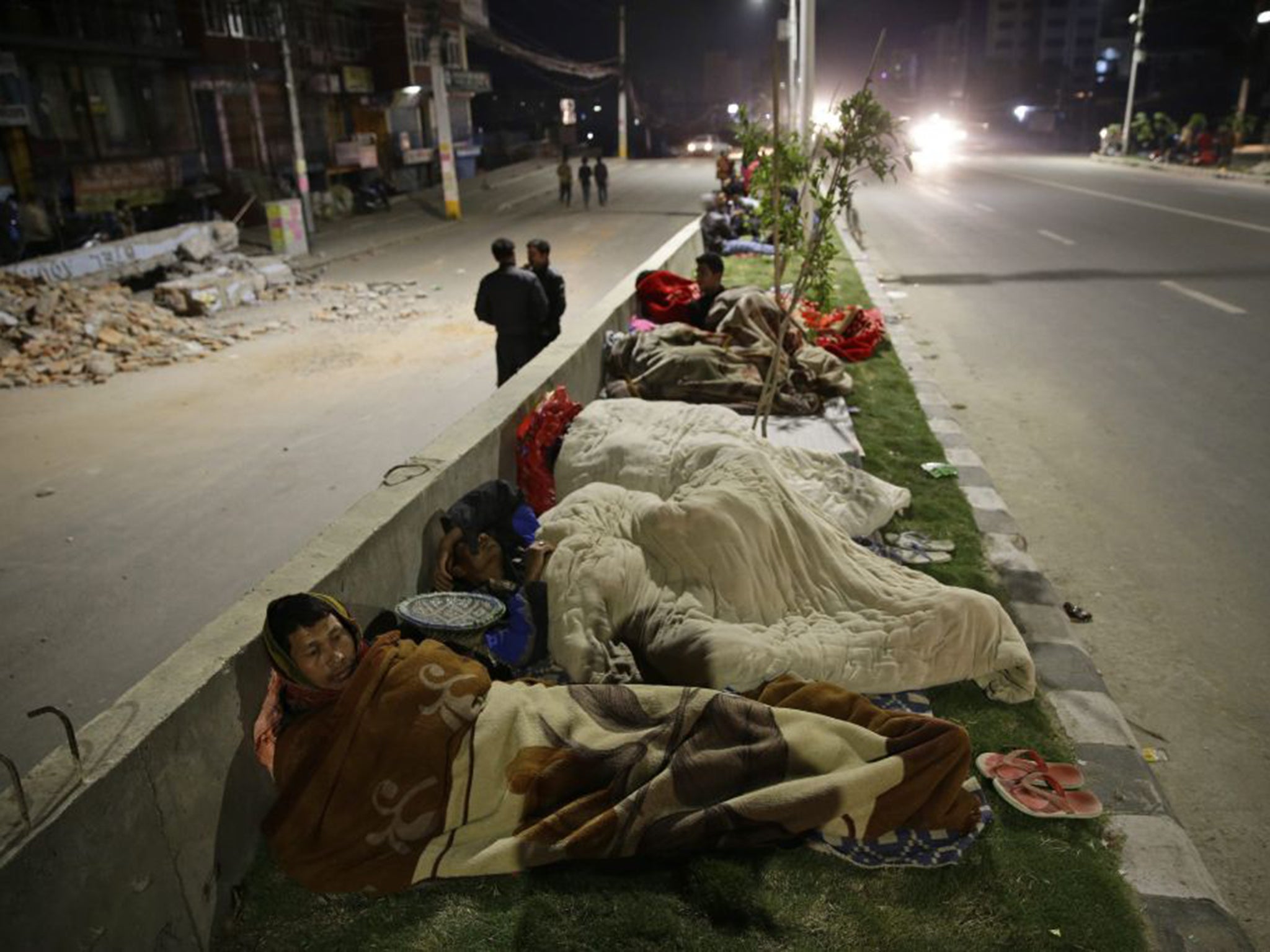
Oxfam said that it is mobilising humanitarian teams from the UK, Bangkok and India. After calls for a rapid response, a spokeswoman for the UK’s Department for International Development said it had deployed an eight-strong disaster response team, including search-and-rescue experts, which would begin working immediately.
An Indian army mountaineering team found 18 bodies on Mount Everest, said a spokesman. Nepal’s tourism ministry could confirm only 10 deaths, but spokesman Gyanendra Shrestha said the avalanche had buried part of the base camp. It’s estimated that at least 1,000 climbers (including about 400 foreigners) were at base camp or on Everest when the quake struck.
April is one of the most popular times to scale the 29,035ft world’s highest peak before monsoon rains make it even more dangerous. American climber Daniel Mazur, one of the world’s most successful Himalayan climbers, said the base camp had been “severely damaged”, and his team was trapped. “Please pray for everyone,” he tweeted.
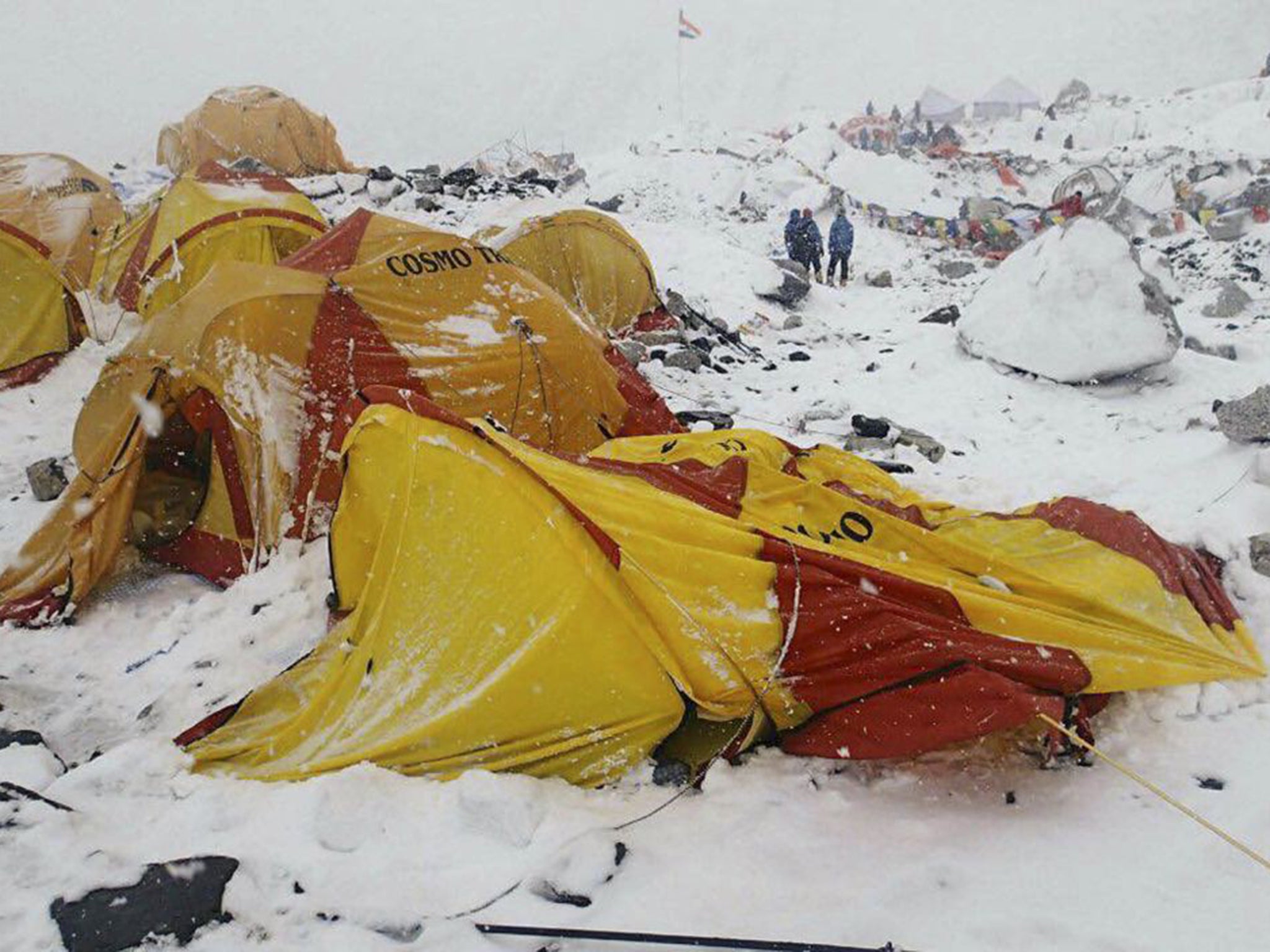
Mohan Krishna Sapkota of the Nepalese tourism ministry said it was difficult to assess the damage on Everest because of poor phone coverage. “The trekkers are scattered all around the base camp and some had even trekked further up,” he said.
India’s Prime Minister, Narendra Modi, called a meeting of senior officials to review the damage and disaster preparedness in parts of India that felt strong tremors. Several Indian states reported extensive damage to buildings.
Additional reporting by Kate Ng and Emma Henderson
Join our commenting forum
Join thought-provoking conversations, follow other Independent readers and see their replies
Comments